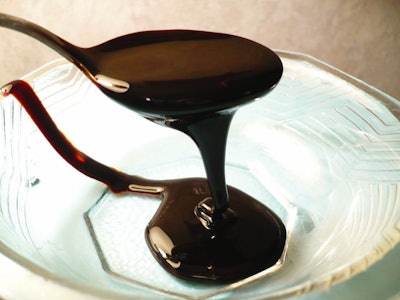
Alternative ingredient has been researched for almost a century
As the forecast for cereal prices is to remain high, the search for alternative energy sources continues.
Molasses is a raw material that abounds in areas that grow sugar beets and sugar cane for sugar extraction. It is a semi-viscous material that requires special handling, but most feed mills are already equipped to add molasses into their formulas for pigs and ruminants.
The suggestion to use molasses in broiler diets appear somewhat exotic to some nutritionists, but there is nothing new about such notion. The use of molasses in broiler diets has been researched for almost a century, with the latest publication appearing in 2019. So, the interest has always been there, but it was limited only around the regions that have easy access to this byproduct. Now, using imported molasses in broiler formulas is something that is discussed in other regions, too.
Broilers can utilize molasses without any problem, as long as it is part of a well-balanced diet. This requires the services of a qualified nutritionist with experience in using this raw material, as molasses is not without its own idiosyncrasies. For example, most of the crude protein found in molasses is not true protein and should be ignored as a source of amino acids during formulation.
Most feed mills cannot handle adding more than 6% molasses in any feed and, if this is the case, then this should be the upper formulation limit for this ingredient. It is suggested to use gradual levels for starter, grower and finisher feeds. For example, a regimen of 2%, 4% and 6%, respectively, would be better than starting broilers at 6% from Day 0.
Adding more than 6-8% molasses requires different feed mill equipment, and an understanding between the feed mill and the broiler producer regarding the issues that may appear with higher molasses levels. A qualified nutritionist should be consulted for such advanced exercises.

















